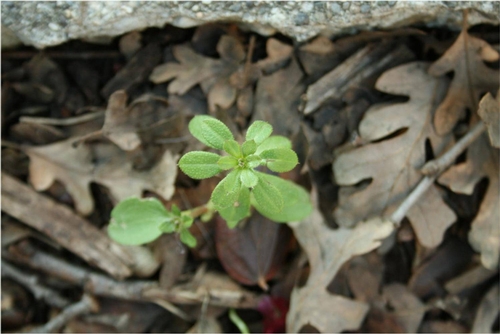Nov 28, 2010
Early winter is is a good time of year to talk about another landscape weed problem - catchweed bedstraw (Galium aperine) also known as cleavers in much of the rest of the world (among many other names).

In California, bedstraw is summer or winter annual and we are starting to see the beginning of the winter germination flush in the Davis area. We usually see a lot of bedstraw germiantion in the early winter after the rain starts and the soils start to cool; however, there is often a secondary flush of germination in the late winter and earlys spring (Feb-March). Bedstraw will grow into the summer but really doesn't do very well in the hottest times of the year. It tends to complete its lifecycle by mid-summer in inland areas although it can hang on a bit longer in cool, moist, shady areas.
A couple of the relatively unique aspects of bedstraw among landscape plants is the square stems (especially near the tips) and curved prickles or hairs covering most of the leaf and stem surfaces. These prickles are what gives bedstraw its "velcro-like" properties - plant fragments can stick to clothing or animals (or animal clothing, I guess...) and help disperse fragments, fruits, and seeds.
The stems are somewhat weak and brittle but can grow up to six feet long and tend to be found in tangled mats on the ground or mounding up over other vegetation. Aside from competition for water, nutrients and light with landscape plants, the climbing-smothering growth habit of bedstraw can cause physical damage to desireable plants and generally causes aesthetic and physical access problem in landscapes and gardens.

Bedstraw can be controlled fairly easily in the landscape by pulling the plants as the root systems are typically not very sturdy. Mulches will help reduce bedstraw germination and make removal of seedling easier. Preemergence treatment with oryzalin herbicides can be effective in established ornamementals and several post-emergence products can be used in some turf or landscape situations.
We recently wrote a Pest Note on catchweed bedstraw (UC IPM Publication 74154) that has a good description, photos, and control suggestions for catchweed bedstraw. This publication is available online at http://www.ipm.ucdavis.edu/PDF/PESTNOTES/pncatchweedbedstraw.pdf and is attached below.
Happy weeding...
Brad
Attached Files: